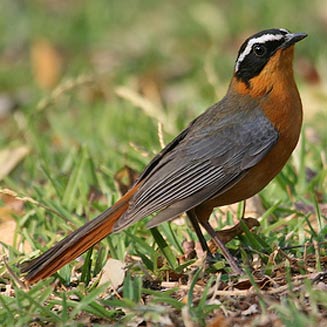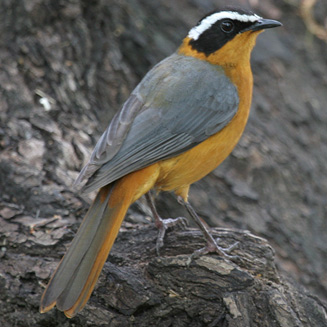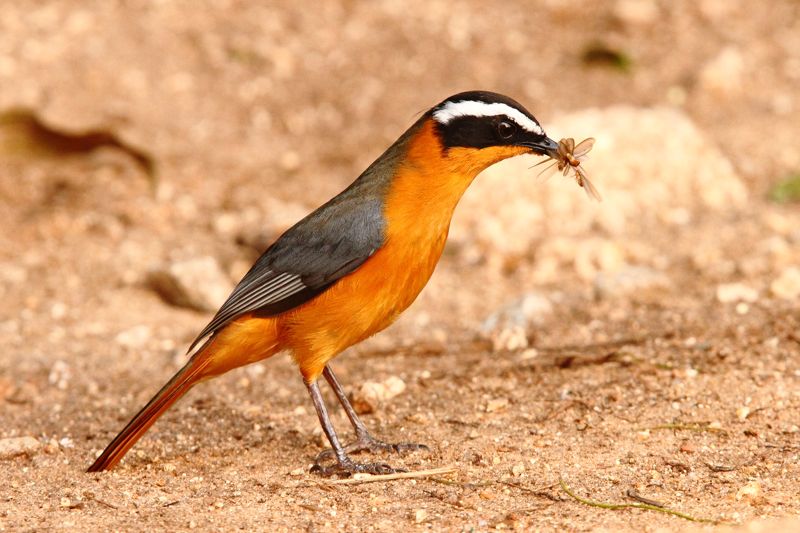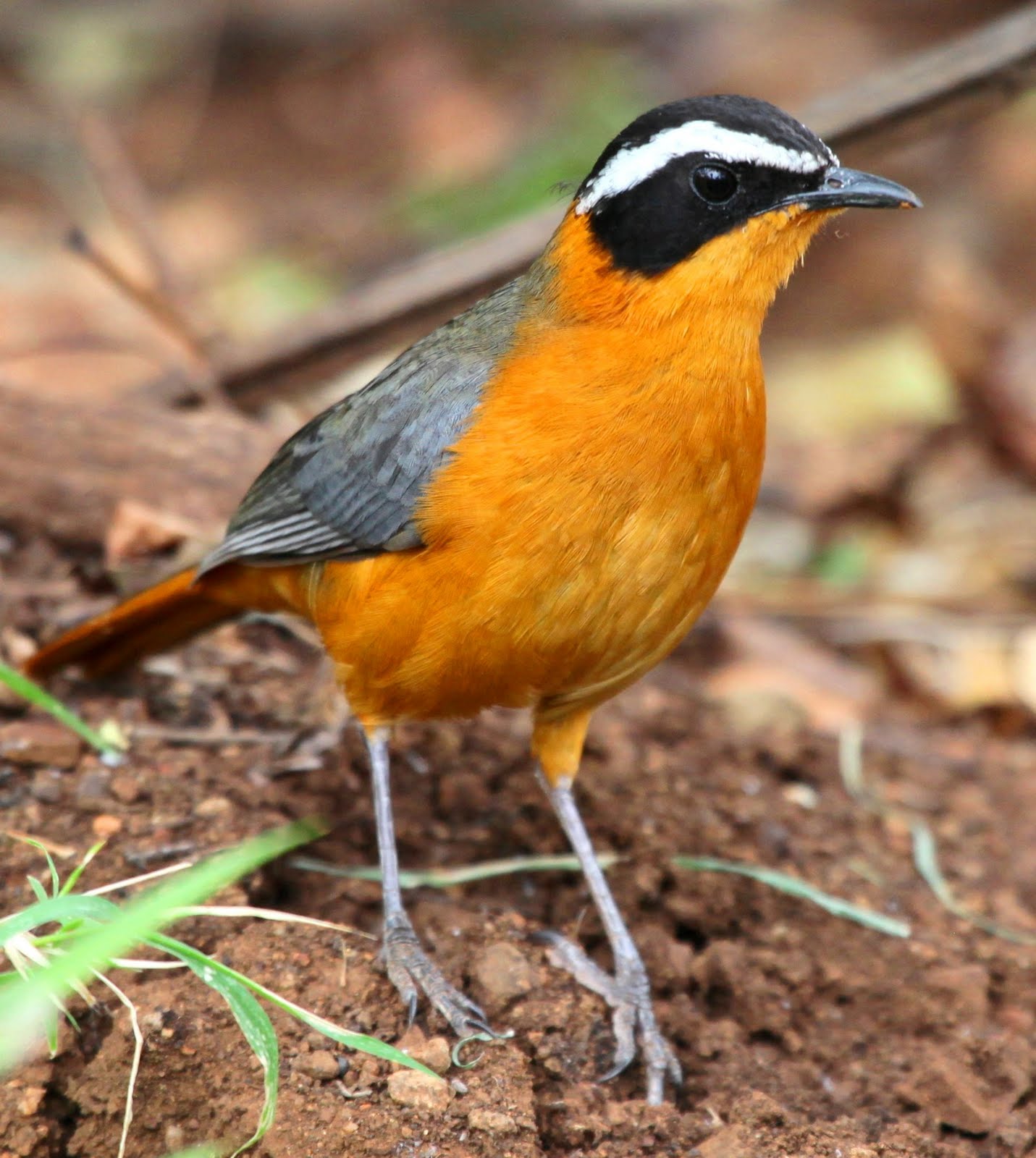
Cossypha heuglini
TAXONOMY
Cossypha heuglini Hartlaub, 1866, Sudan.
OTHER COMMON NAMES
English: Heuglin’s robin; French: Cossyphe de Heuglin; German:
Weissbrauenrцtel.
PHYSICAL CHARACTERISTICS
7.9 in (20 cm); male 1.1–1.6 oz (30–44 g); female 1.0–1.3 oz
(29–36 g). Brownish upperparts with black head and white
brow from bill to nape. Orange throat, neck collar, and underparts.
DISTRIBUTION
Africa south of Sahara, chiefly southerb Sudan through East
Africa, Central Africa west to Angola and south to northeastern
South Africa and Mozambique.
HABITAT
Riverside forest and evergreen thickets, with dense understory,
garden shrubberies.
BEHAVIOR
Solitary or in pairs, feeds mostly on ground but sings from
high perch.
FEEDING ECOLOGY AND DIET
Insects, especially beetles and ants, also caterpillars, moths,
grasshoppers, and other small invertebrates.
REPRODUCTIVE BIOLOGY
Monogamous and territorial; strong pair bond throughout
year. Nest in cavity in tree or stump. Two to three eggs, incubation
by female for 12–17 days.
CONSERVATION STATUS
Not threatened. Common and secure in core range, rare in
some peripheral regions.
SIGNIFICANCE TO HUMANS
None known.
Other popular Animals
Photo Gallery of - White-browed robin chat




 Animalia Life
Animalia Life